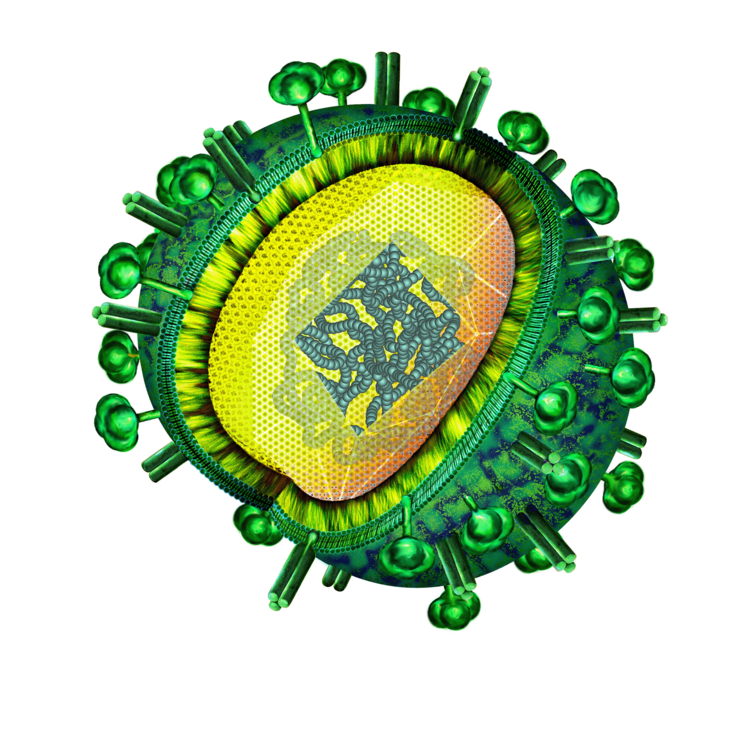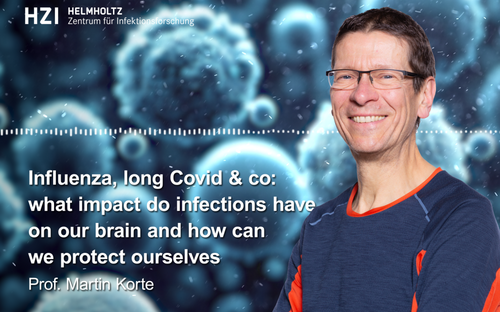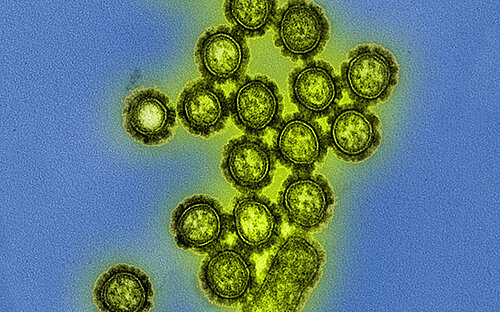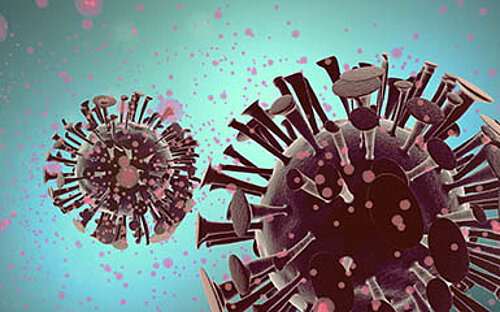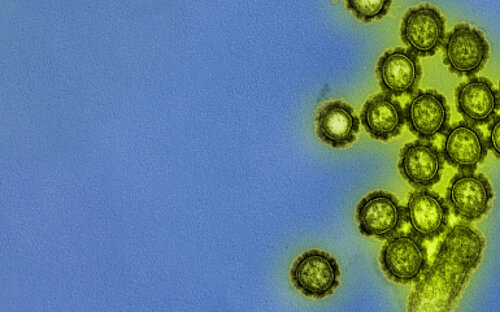Influenza - a yearly infection
It is quite common, but not very pleasant: The “flu”, an infection with influenza virus. It is transmitted via droplet infection between individuals. If you catch it, you are agonized with a high temperature, aching head and limbs, chill and dry cough.
The disease is quite common, but not very pleasant: The “flu”, an infection with influenza virus, has its peak season in January and February. During this time waves of influenza infections are rolling through the country. The infectious disease is caused by viruses of the type Influenza A, B or C and transmitted via droplet infection between individuals. If you catch it, you are agonized with a high temperature, aching head and limbs, chill and dry cough. Not to be confused with a harmless cold, an Influenza infection often lasts up to two weeks. In Germany 8,000 to 11,000 people on average die every year at flu, mostly by virus type Influenza A (source: Robert Koch Institute). Because the pathogen is very changeable and also varies in its dominance each season, the number of deaths varies greatly.
Structure of Influenza viruses
Influenza viruses have an oval-globular shape with an approximate diameter of a ten thousandth of a millimeter. Proteins and lipids constitute the virus surface, the so-called viral envelope that encloses the genetic information. Changes of the surface proteins Hemagglutinin (H) and Neuraminidase (N) are common and rapid, especially in Influenza A viruses. The consequence: small modifications of these proteins enable the virus to evade the memory function of the human immune system because the body’s immune memory cells only trigger a rapid and specific defense reaction if the intruder is known.
The first contact between Influenza virus and cells of the human airways is mediated by Hemagglutinin that is also responsible for the virus entry into the human cell. After their propagation the new-built viruses leave the infected cell through the action of Neuraminidase.
Based on the composition of their surface proteins H and N, Influenza viruses are categorized into so-called sub-types. Prominent examples are the causative agents of swine flu – H1N1 – and bird flu – H5N1.
But why are some people more susceptible to develop severe disease after an infection while others appear to be more resistant to the virus? And in which way does our body defend itself in the initial phase of an infection before virus-neutralizing antibodies have been produced? These and other questions are addressed by scientists in the HZI Department of “Infection Genetics” that is headed by Prof. Klaus Schughart. The researchers investigate the role of our genes on the defense against Influenza A virus infections and the early immune responses in our body. Additionally, Schughart is member of the governing body of the network “FluResearchNet”, a project funded by the German Ministry of Education and Research (BMBF). This national research network aims to understand the molecular mechanisms of Influenza A virus infections and to elucidate the transmission of the flu virus between bird, mammals and human.
(sho)
Further Information
- Information of the working group Influenza of the Robert Koch Institute on the activity of influenza in Germany
- Comprehensive background information of the World Health Organization on influenza
- The Bundeszentrale für gesundheitliche Aufklärung (Federal Centre for Health Education) answered the most important questions about the influenza
Involved research groups
-
Genome Architecture and Evolution of RNA Viruses
 Dr Redmond Smyth
Dr Redmond Smyth -
Immune Regulation
 Prof Dr Dunja Bruder
Prof Dr Dunja Bruder -
Biosafety Level 3 Laboratory
 Dr Kai Schulze
Dr Kai Schulze -
Nano Infection Biology
 Prof Dr Christian Sieben
Prof Dr Christian Sieben -
Recoding Mechanisms in Infections
 Prof Neva Caliskan
Prof Neva Caliskan -
Vaccinology and Applied Microbiology
 Prof Dr Carlos A. Guzmán
Prof Dr Carlos A. Guzmán
